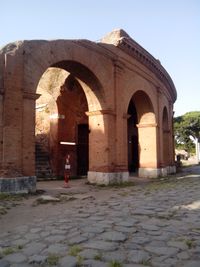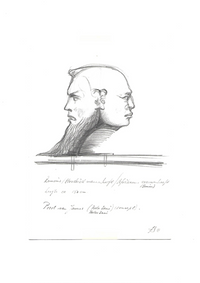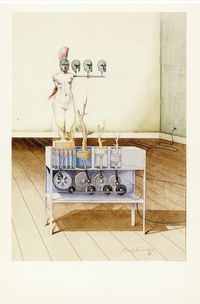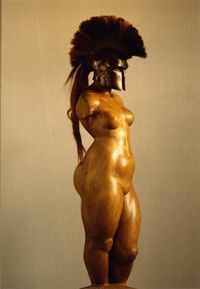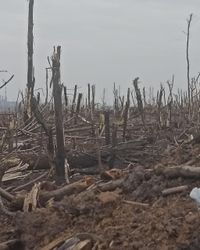Portfolio
Imperméable percé
Imperméable ? Many of my independent works fall under a thematic concept, to which I have given the somewhat cryptic title Imperméable ?. The French term "imperméable" means something like impenetrable/impermeable. I use this term as a metaphor for the perception we as individuals have about how and whether (?) we can truly penetrate the essence of the material and immaterial things that surround us. And more particularly, I am concerned with the interaction between the individual and his environment; the perception of one's own existence, his psyche, from which he derives his identity; and the vulnerability of that identity in his wavering journey through the labyrinth of events over which he has no control.
WW I A key element within this concept has always been WWI, the First World War. A phenomenon unparalleled and, in my opinion, still to be considered as the macabre final act of the most profound cultural revolution in human history. From this background, at the beginning of this century, I created the object Imperméable percé (~the impenetrable pierced~). Two wooden colossi in the, as mentioned under Kranos, helmet/head shape; each weighing about 350 kg. They consist of axially arranged solid plates of various thicknesses with corresponding interruptions. Both are each other's supplement and together form a unity of two antagonists. A hole runs diagonally through both sculptures, as if pierced by a projectile. In front, they present the appearance of a three-dimensional barcode. The representation of the degradation of the human individual into a disposable item devoid of any personal identity. It has always been my ambition to find a suitable location for Imperméable percé somewhere along the former Western Front between Ypres and Verdun as a still living memory of the Great War, as WWI is still called in the surrounding countries. In this execution, I deliberately chose wood because of its organic and vulnerable nature, but the concept could also be the prelude to a much larger version of about 10 meters high; a composition made of urinal steel that slowly sinks into the mud and rusts away into an amorphous mass over time. A slowly disappearing relic in time, affected by the elements.
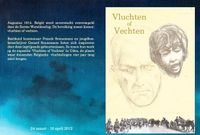
Flight or fight
Introduction The brothers Franck and Gerard Sonnemans both chose artistic professions to gain a grasp on and provide commentary about the developments in the world around them. This seemed to be where the similarities in their work ended. Gerard writes youth books about heroes and victims (but often heroes become victims, or vice versa...). Franck creates sculptures and paintings with a philosophical background, often inspired by the horrors of World War I. However, they discovered more content-related kinship between their works when Gerard wrote a book set in Vluchtoord Uden during that war. The exhibition 'Fight or Flight' in Uden shows how Franck and Gerard, each in their own way, have processed the displacement and alienation of war refugees or soldiers at the front into artistic expressions. They aim to prompt viewers/readers to reflect on the insanity of war and violence. This web quest not only stimulates that thought process but also challenges you to translate it into your own artwork. What do you choose?
Drulon
Drulon From 1999 to 2019, the sculpture gardens Jardins de Drulon flourished around the castle of the same name in central France. Each year, there was a rotating participation of multiple artists who either exhibited existing work or intertwined new work in situ with the landscape. This was an international gathering with contributions among others from the Dutch Circle of Sculptors. As a co-initiator, I deeply regret that, due to budgetary reasons, the project has had to close its doors. (Salute to my dear friend Piet…)
Some of my works at the Drulon estate:
~ Ici vous quittez le paradis ~ "...Here you leave paradise..."
▒ Wooden gate; perspex slats with print; 360 x 250 x 30 Two-sided passage from one landscape to another; print: -the expulsion from paradise- (Michelangelo).
~ Paysage obscur ~ …Obscure landscape...
"▒ Stainless steel; plexiglass; 220 x 50 x 2 Is landscape merchandise ( ?..)"
~ L’ orgueil d’ Ulysse ~ …The Pride of Ulysses…
Plaster; black and bronze coating; life-size The insatiable urge of humanity to trespass forbidden unknown territories. Dante, Divine Comedy, Inferno, XXVI, 85-142
~ Communauté décapitée ~ …Decapitated society…
▒ Stainless steel ─ 220 x 30 x 15; glass ─ 60 x 45 x 2 Memorial for the forced laborers from Midden-Limburg, transported from Venlo to Nazi Germany in October 1944. Placed in Helden, Nederweert, and Venlo.
Œil-de-Bœuf
Oeil-de-boeuf * fits in the series of objects like Elagabal and Imperméable. (see also Kranos) It can be considered as an autonomous sculpture, but also as an architectural model.
▒ Travertine, wood, brass, tilework dimensions incl. base: 160 x 120 x 80
A decapitated head/helmet shape with passages suggesting eyes, nose, mouth, and ears. There is a deliberate choice of limestone (travertine) as a material, alluding to human bone.
It represents the sensory interaction between outside and inside, encapsulated in an amphitheater-like construction. Inside is an arena, the focal point of 'perception'. This is the theater where the transition from perceptions to thoughts occurs. Here, constantly fluctuating processes take place, from emotional reactions like horror and amusement to the development of new insights and ideas. The included scaffolding structures, as it were, reach through an imaginary skull roof; they refer to the construction of, or the flight to, boundless transcendent thinking.
"Oeil-de-boeuf" literally translates to "ox's eye." Besides referring to (1) the eye of an ox, the term also represents (2) a round window in a building and (3) a horse with an eye enlargement, resulting in the animal being nearsighted and very skittish.
Elagabal
About Elagabal : or El Gebal (Ilah ha-Gabal: lord of the mountain). Elagabal was an ancient Phoenician-Syrian sun god, whose cult is closely related to various sun cults in ancient Egypt and the Middle East. Elagabal was an ancient Phoenician-Syrian sun god, whose cult is closely related to various sun cults in ancient Egypt and the Middle East.
Elagabal Elagabal is a solar/wind object that can be considered both as an autonomous sculpture and as an architectural model. It is a hollow skull-/helmet-shaped sculpture, which is covered on the outside with approximately 1500 polished marble blocks of white Carrara. The whole rests on a tapering wooden construction in the shape of a mountain like a ziggurat, centrally equipped within with a spiral staircase. Total dimensions: 160 x 120 x 150 cm. At the University of Eindhoven, I conducted an architectural feasibility study to determine whether Elagabal can also be realized as a building with a diameter of over 20 meters. The results of the study were unequivocally positive. Using advanced construction techniques (sprayed concrete on a 'balloon construction'), a self-supporting dome can be constructed in which the pressure forces are well distributed around.
What does the building look like then? Elagabal thus forms the concept for a much larger solar/wind object to be executed. A dome-shaped building, standing freely in an open sun-drenched plain or on a hill. The base is oval, with a longitudinal axis of about 20 meters. The height of the dome is approximately 12 meters. The outer shell is made of reflective white tiles, marble, or ceramic. The interior space is hermetically sealed and only accessible via an underground staircase. The front of the building faces south along the longitudinal axis. Across this southern front, from east to west, there are 17 prism windows set at an angle of 53°. As is known, the path of the sun moves from east to west, but the angle of light incidence varies gradually throughout the year due to the shifting position of the earth's axis relative to the sun. The prism windows in Elagabal will, depending on the position of the sun, diverge its light differently. In other words, there will be subtle spectral color shifts of the incoming sunlight observable within the space throughout the year. Additionally, around the dome's roof, there is a wind organ consisting of 32 organ pipes through which, depending on the wind direction, higher or lower flute tones are carried inside. Every day, therefore, there will be a different light and sound experience inside the space. Sometimes this experience will also be minimal, such as in calm conditions and/or heavy cloud cover.
What is the 'content' of the building? The formal content of the building is literally empty. And it should remain so. Therefore, no obstacles and no exhibitions... The basic experience is the sensation of the emptiness of that empty space. The aim is precisely to make the seemingly invisible emptiness spatially visible or tangible in this way. How do you capture air, light, or emptiness? Here, you are constantly tossed back and forth between subtle interpretations of simple concepts: ~ content, space, and emptiness ~, both literally and figuratively. In this environment, you are also completely thrown back on yourself and your primary sensations. For some, it will be a contemplative space, for others, a claustrophobic vault. Rick Vercauteren once aptly described the interior space of this object as 'full of emptiness'.
Il lato scuro del sole
Il lato scuro del sole (It.: ..The dark side of the sun..). On one hand, this is an autonomous image. Due to the partially opened construction, it also functions as an explanation for the interior of its marble counterpart Elagabal.
Since time immemorial, in almost every culture, the sun has been recognized as the omnipotent source of all life. This universally bestowed the sun with supreme divine status, in honor of which many more or less identical cults emerged. The worship of the sun was often led by high priests, whose position was frequently linked to that of the highest authority. Pharaohs, kings, emperors often represented the omnipotence of the sun or even elevated themselves to its incarnation. Like later Roman emperors, who bore the honorary title Sol invictus: - The Unconquered Sun -.
The Dark Side of the Sun is a reference to the arrogance of power. The dome of the object, with its corona on the outside, alludes to the sun on earth, intended to convey the radiant grandeur of a ruler. Illustrative figures are Ramses II, Heliogabalus, and Louis XIV, the Sun King. However, on the inside of the object, the vault and the floor are pitch black, causing one to lose all sense of dimension. The only points of orientation are the light and sound that come in through a series of prisms and organ pipes, respectively. Both elements here have a completely different meaning than in Elagabal. Instead of radiating out, light and sound here are only absorbed and sucked into the void. The image thus represents ostentatious complacency and self-exaltation: the dark side of power...
Recently, on a hill in Germany, I discovered a building by the Swiss architect Peter Zumthor, the Bruder Klaus Chapel in Mechernich-Wachendorf. What struck me was that he had conceived a more or less comparable experiential concept to that of Elagabal and The Dark Side of the Sun. To better visualize the interior effect of both of my objects, I have taken the liberty to include some photos of Zumthor’s chapel here on this site.
Destriero / Cheval de bataille
Horse objects
In many works, the phenomenon of the horse plays a fundamental role. This role goes beyond just the four-legged appearance; it is used as a metaphor.
The underlying theme here also makes a reference to World War I. On one hand, there is a reflection on the estimated 10 million horses and mules that lost their lives at the front during their deployment... On the other hand, the horse takes on a more metaphorical role. It becomes the carrier of the imagination of the tormented human soul.
The horse is particularly suitable for depicting emotional abstractions. In sculptures like Destriero and Cheval de bataille, opposing aspects vie for supremacy: strength and elegance versus mortal fear and mutilation. Horse forms in an arena or a slaughterhouse as vulnerable and defenseless organic beings, threatened within an alienating ~ human-created ~ environment from which escape is impossible.
Ercole nel bosco
▒ Beechwood, bronze, Persian travertine
Dimensions. : 60 x 40 x 40
Ercole nel bosco (It. ; Hercules in the forest) is an autonomous sculpture that can also be seen as a model for a larger installation in a rolling landscape.
The object tells the story of the trials of the classical hero Hercules (Gr. Herakles); a metaphor for the challenges and obstacles that humans face. On one side, there are 12 curved and pointed beechwood segments, sprayed with a transparent poison-green lacquer on one side. At the top, they are split, resembling snake tongues. They represent the 12 nearly impossible tasks assigned to Hercules by the gods. In contrast, a bronze figure, Hercules, confidently strides towards them. Although arms and head are missing, the figure radiates strength and determination.
For an optimal impression of the whole, proper positioning in relation to sunlight is important. When the eastern morning light illuminates the backside of the forest, it appears to cast an ominous shadow over the seemingly insignificant figure. However, when the light later comes from the west, the roles between the antagonists seem to be reversed, and the figure exudes a sense of threat.
Janus' Gate - Concept
Concept : Gate of Janus
Location : Roundabout Blerick / Blariacum College
Motivation In the years 2006-2007, the Blariacum College in Blerick constructed a new building on the grounds in the northwestern quadrant of the right-angled intersection of the Drie Decembersingel and the Burgemeester Gommansstraat. The new school building is a remarkable example of modern architecture. It undoubtedly looks futuristic, not only because of its oval floor plan but also due to the transparent continuation of this floor plan in the higher floors and the appropriate use of materials and colors. It is also important to note that the building has been given its spatial autonomy. It is not just crammed somewhere, but it can 'breathe' freely on its own broad territory.
Along its longitudinal axis, the building is more or less oriented frontally towards the aforementioned intersection of streets. A roundabout has been constructed at this intersection, and thus, spatially, the roundabout is clearly within the influence of the building. Feeling closely connected to the Blariacum College and its philosophy, I believe that any artistic application on the respective roundabout should, conceptually and formally, be as closely related to the school and its building as possible.
As an educational institution, Blariacum College considers not only knowledge transfer but also the promotion of social integration as its most important missions. In a metaphorical sense, it sees itself as a gateway or portal for all students on their journey to assimilate knowledge and integration. My concept for the design of this image on the roundabout aims to align with this idea. In addition to emphasizing the passage between the two streets, the Gate of Janus also serves as a symbolic satellite of the building, gliding along its forecourt, so to speak.
While for most Dutch people, the name Janus might evoke a somewhat mundane association, I believe that with this Janus symbol in this location, many contemporary and historical puzzle pieces will surprisingly come together in one place.
Janus Ianus (Janus) is one of the oldest and most significant Roman gods. In Roman mythology, Janus was the god of transitional processes in the perpetually changing complex of constantly renewing and falling apart things around us. He was the god of passages, of beginnings and endings, of opening and closing. The gate or door (ianua) therefore bore his name. Janus was often depicted as a god with two faces, each looking in the opposite direction (Janus bifrons), indicating that he could simultaneously oversee both the future and the past. In this duality, he often represented not only time but also the sun and the moon, or day and night. As the god of fertility and life, he symbolized the annual cycle of seasons, beginning and ending in the month named after him, January. He was also mentioned as the founder of social life and civilization. He was believed to be the god who liberated people from their barbaric state and brought them to an orderly existence.
Janus en Blariacum The Blariacum College derives its name from the ancient Roman designation of the present-day Blerick. Blariacum, as it was called back then, served as a military outpost along the Meuse River for the Romans in the first centuries of our era.
One can wonder whether the Romans brought their god Janus with them to Blariacum or if it was the other way around, with Janus leading them to Blariacum?... However it may be, it seems that Janus has never left Blariacum over the past millennia. How else can we explain the coincidence that not only does Blariacum College want to be the symbolic 'gate' for its students, but also that in ancient times, Janus was revered as the guide and protector of emerging adolescents?
The Gate of Janus With the Gate of Janus on the roundabout in front of Blariacum College, I believe that a subtle synthesis between ideology, symbolism, history, and landscape architecture can be achieved.
My concept starts with a double gate structure, approximately 8.50 meters in height, to be constructed in the Roman style using concrete and terracotta tiles (opus latericium); with crisscrossed wrought iron fencing; and a bronze Janus head of 1.50 meters as a crowning piece. The entire structure is based on two identical L-shaped elements, positioned at right angles to each other on the left and right, so that when approaching the roundabout, two different gates are visible axially. Along the north-south axis, you see an 'open' gate, and along the east-west axis, you see a somewhat 'closed' gate. *
This double gate rises from a circular basin, with a construction diameter of approximately 14 meters.
In the center of this basin, there is a circular cascade well with a diameter of 3.50 meters, into which the water flows downward. Essentially, it's the reverse principle of a fountain: the water calmly bubbles up along the outer edges of the basin and falls back into the well in the middle. Due to the force of the concentrically falling water on a grid below it, a fine mist can rise from the well at appropriate atmospheric moments. **
At the center, at the highest point of the 'open' gate, a bronze Janus head is envisioned. Approximately 1.50 meters in height. The bronze head, in terms of design, is literally the organic completion on top of... It dissociates and harmonizes, unity in contrast. After some deliberation, I have chosen a single head with two faces, instead of two head halves that almost touch each other (see drawings and models). Much of this has to do with later decisions about the basic structure, which has only become stronger in multiple ways. Incidentally, the Romans depicted the Janus head in various ways. In addition to two identical male faces, there were also combinations of the sun and moon or of man and woman. For this project, I lean towards a more specific combination; a classic Roman/Etruscan male face paired with a Negroid female face.
* In ancient Rome, the Temple of Janus held a prominent position. During times of war, the front and rear gates of the temple were always open. They were only ritually closed during times of peace. Over a period of more than 600 years, they were rarely closed.
** According to legend, when the earliest Romans under Romulus were besieged by enemies, they couldn't manage to close one of the city gates. In their time of need, the god Janus is said to have come to their aid by causing a sulfur spring to gush forth at that spot, which kept the enemy outside the gates.
The mist rising from the cascade well is a reference to that sulfur spring. Furthermore, the circulating water in the cascade is a perfect metaphor for the essence of Janus, the perpetual process of changes and renewals in Nature. Recreation upon recreation.
Panta rhei (“everything flows” / “everything is in motion”): Heraclitus
Kranos
Early in my Gymnasium days, a special fascination for ancient Greek culture arose. A stream of meandering revelations then became fixed in memory and thought. A homogeneous package of literary, mythological, historical, and philosophical insights, in which the artistic component should not be left unmentioned, last but not least.
Kranos When I first traveled to Greece after graduating, it was an exceptional experience to see things up close in their original splendor under the Mediterranean light. However, I also felt a slight confusion, caused by the discrepancy between what remained and how it must have looked in the past. I realized, though, that decay also has a certain aesthetics, and furthermore, that the human mind has the ability to imaginatively complete a quasi-unfinished or damaged object through the spiritual experience it can evoke. What left the most profound impression on me at the time, albeit unconsciously, was a visit to a gallery at the archaeological museum in Olympia. Suddenly, I stood there, almost literally face to face with a row of classical bronze helmets... The shape of such a helmet (Gr. Kranos), with its specific eye holes and nose protector, had a deeply penetrating psychological impact on me. It felt as if I were looking at a bronze relic in which the soul of its former wearer was still present and, in turn, it also seemed to gaze back at me with scrutiny...
Basic shape That specific helmet/head shape has become a recurring metaphysical basic form in my later visual works. In a series of objects, œil-de-bœuf, elagabal, imperméable ?, imperméable percé, and elagabal 2 (il lato oscuro del sole) were created. They all take the form of hollow, spherical constructions, with the difference in material choice, such as limestone, wood, or lead, playing a specific role in each one. Each object is indeed an autonomous sculpture, but each can also be considered as an architectural model. Concepts for high contemplative spaces where sensory reflection takes place. An interaction between inside and outside; the observation versus the inner perception of it. How the reality of things manifests itself is always just the subjective resonance of it, as it can only come into existence in the mind of each individual separately.
Ceux de 14 (Gangreen)
forms a group of 4 sculptures, executed in dental plaster and polyurethane.
Dimensions of each: 75 x 35 x 35 cm
The title of the work is taken from the book of the same name by Maurice Genevoix, which can be loosely translated as "Those of 14 (1914)". In this book, Genevoix reports on the horrors that he and his companions had to endure at the front during World War I.
Four naked men, affected by a gradually progressing infection, gangrene. However, this gangrene embodies not only a microbial process. The bodies undergo a metamorphosis in which organic tissue is slowly absorbed by an inorganic matter of artificial structure. The interpretation is multifaceted. While there is clearly physical necrosis, the actual damage is of a somewhat undefinable mathematically constructed texture. The war has eaten further and further into their bodies. Bodies that have slowly become mechanisms, devalued into casually consumed industrially manufactured robotic war material. Disposable products. Gradually, the men are stripped of their human identity and individuality. Depending on the degree of damage, their poses vary from self-assured to resigned, to desperate resistance, to madness/agony.
Apart from war, there is the question of to what extent this metaphor continues in society due to the advancing AI developments?
Imperméable
Lead, steel, plaster
Dimensions. : 105 x 75 x 80
Imperméable belongs to the series of objects like Oeil-de-boeuf and Elagabal.
A closed head/helmet shape, as if floating above its own shadow.
The sculpture is a hollow, hermetically sealed, spherical structure made of reinforced plaster, covered with lead foil, and elevated above a steel oval.
The title of the artwork is derived from the French term for impermeable/impenetrable. Due to its enclosed nature, it is essentially an inward-looking image, aiming to refer to the inaccessibility of individual thinking; to the complete shielding of the private domain of one's own identity from others.
The outer shell of the helmet-shaped structure is made of lead. Aside from its high density, this metal is characterized by two ambivalent properties: on one hand, it has a protective effect, such as shielding against harmful radiation, but on the other hand, it is also toxic to organisms.
Epifanie (kouros)
▒ Various materials
Dimensions: 260 x 100 x 160
"Epifanie" is a two-part composite installation. In the front, there is a Greek/Egyptian temple-shaped structure made of gas concrete, and behind it, there is a half-submerged shell-hole made of earthenware, which will be supported by snapped and charred tree trunks.
In the temple, there is a kouros (Greek for "young man") statue illuminated from above. The pose of the statue is derived from the archaic canon of Hellenic sculptures: standing upright, facing forward, with a serene smile, arms straight alongside the body with clenched hands, and the left foot slightly in front of the right. The statue represents an ode to youthful masculinity.
Epiphany means 'appearance' or 'manifestation.' In this setup, it represents 'the moment when the deity presents itself to humanity' or even more so, 'the divine within the human.'
Behind the temple, there floats a half-submerged lead soldier's coat in an oval basin. This basin has the shape of a grenade crater, but one could just as easily associate it with a baptismal font or a womb.
The entirety fits within the series of World War I works but essentially tells a timeless repeating continuum. The quasi-divine youth is often sacrificed without scruples for, often shadowy, interests of the establishment. Generations of individuals are cut down in their prime, deprived of the opportunity to let life come to full fruition. Sic transit gloria mundi.
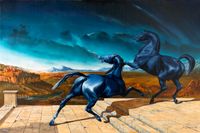
Horses in a landscape
▒ Oil on canvas Dim.: 90 x 70 cm
Two startled horses making a flight movement to the right, away from the terrace they are on. The blue of the horses slowly gets absorbed by the night sky. The ominous threat comes from the west, the direction from which the late sun illuminates the landscape. That landscape stretches from left, across the Italian Orvieto, to a tundra-like plain on the right. The contrasts in the whole are not only in the complementary use of ochres and blues. The expressed threat is metaphysical and represents the advancing dissonance between culture and nature.
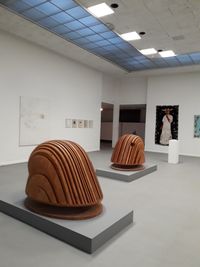
.jpeg/picture-200?_=186547b9270)
.jpeg/picture-200?_=18654ab5e2c)
.jpeg/picture-200?_=18654ab58e8)
.jpeg/picture-200?_=18654ab5118)

.jpeg/picture-200?_=18654b23e67)




.jpeg/picture-200?_=18654b5bde3)

.jpeg/picture-200?_=18654b5c4e0)
.jpeg/picture-200?_=18654b5c4e0)
.jpeg/picture-200?_=18654b5c8c8)
.jpeg/picture-200?_=18654b5ccb0)
.jpeg/picture-200?_=18654b5ccb0)
.jpeg/picture-200?_=18654b5d098)
.jpeg/picture-200?_=18654b5d098)
.jpeg/picture-200?_=18654b5e038)
.jpeg/picture-200?_=18654b5d480)
.jpeg/picture-200?_=18654b5d868)
.jpeg/picture-200?_=18654b5dc50)
.jpeg/picture-200?_=18654b5e038)
.jpeg/picture-200?_=18654b5e420)

.jpeg/picture-200?_=18654b90bbd)

.jpeg/picture-200?_=18654b910a0)
.jpeg/picture-200?_=18654b91488)
.jpeg/picture-200?_=18654b91870)
.jpeg/picture-200?_=18654b91c58)
.jpeg/picture-200?_=18654b91c58)
.jpeg/picture-200?_=18654b92040)
.jpeg/picture-200?_=18654b92428)
.jpeg/picture-200?_=18654b92810)
.jpeg/picture-200?_=18654b92810)
.jpeg/picture-200?_=18654b92bf8)
.jpeg/picture-200?_=18654b92fe0)

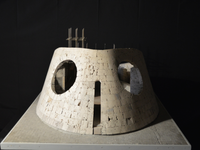
.jpeg/picture-200?_=18654bc0e40)
.jpeg/picture-200?_=18654bc0e40)
.jpeg/picture-200?_=18654bc1228)
.jpeg/picture-200?_=18654bc1610)
.jpeg/picture-200?_=18654bc1610)





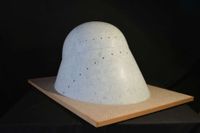
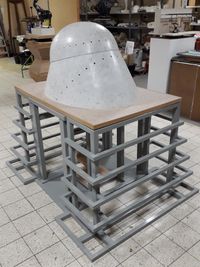


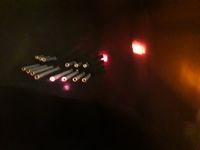
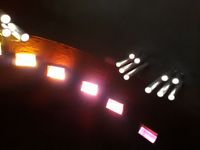
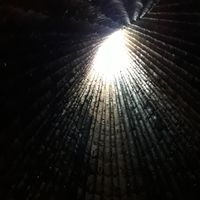


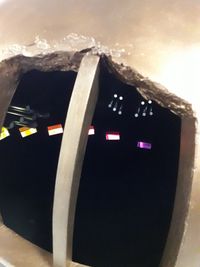
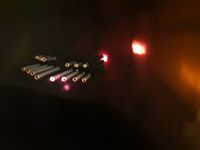

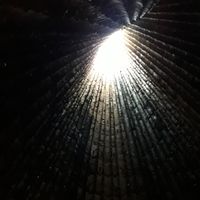


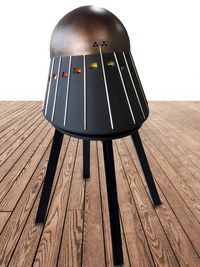
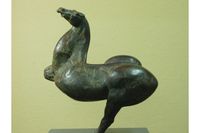
.jpeg/picture-200?_=1865466e190)
.jpeg/picture-200?_=18654c636c2)

.jpeg/picture-200?_=18654c63fa0)
.jpeg/picture-200?_=18654c63fa0)
.jpeg/picture-200?_=18654c64388)
.jpeg/picture-200?_=18654c64770)
.jpeg/picture-200?_=18654c64b58)
.jpeg/picture-200?_=18654c64f40)
.jpeg/picture-200?_=18654c64f40)
.jpeg/picture-200?_=18654c65328)
.jpeg/picture-200?_=18654c65710)
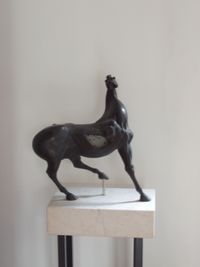

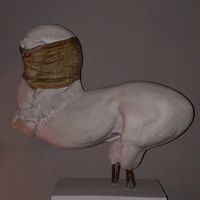
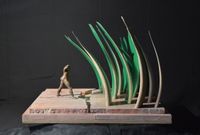
.jpeg/picture-200?_=18654c9d17f)
.jpeg/picture-200?_=18654c9cdc8)
.jpeg/picture-200?_=18654c9c9e0)
.jpeg/picture-200?_=18654999dd8)
.jpeg/picture-200?_=18654cbce87)
.jpeg/picture-200?_=18654cbc998)
.jpeg/picture-200?_=18654cbc998)
.jpeg/picture-200?_=18654cbc5b0)
.jpeg/picture-200?_=18654cbc1c8)
